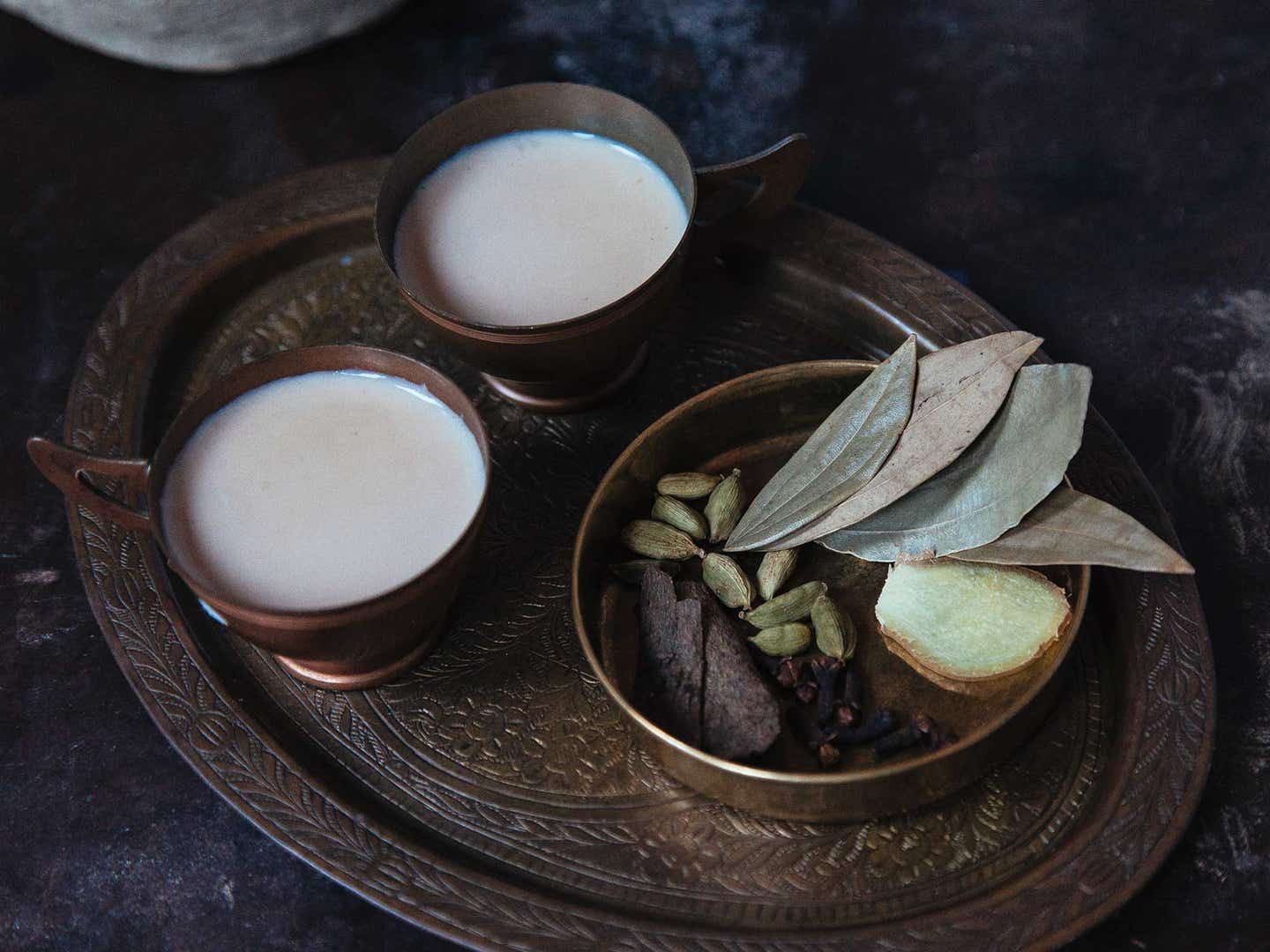
Stop Worrying About Authentic Chai—There’s No Such Thing
A tea maker deconstructs the complicated culture of the world’s many forms of chai
Silky with a hit of aromatic spices as warming as they are sweet—chai is comfort in a cup. Which explains why you can find it in some form just about everywhere, and as many opinions on the right way to make it as there are people who love it.
There’s a certain breed of chai lover that turns their nose up at the drink’s globalized—and often whitewashed—ubiquity, that rolls their eyes at the sight of the squeeze bottle of “chai” concentrate at Starbucks for lattes. And I understand why they do. In the West, chai’s popularity has rendered it much like curry powder, an anemic, essentialized ghost of a cultural tradition it can never hope to capture. “This isn’t authentic chai,” a person might say. “The real Indian flavors—the tea, the cardamom—aren’t there.”
Except authentic chai is like an authentic turkey sandwich. It doesn’t exist. Chai is different wherever you go, even in my own country of Bangladesh. And that is its beauty. If you want to truly understand chai—the real chai—you need to think of it less a recipe than a social adhesive, and the fuel that powers a sizable fraction of the world.
Dissecting 'Indian' Chai
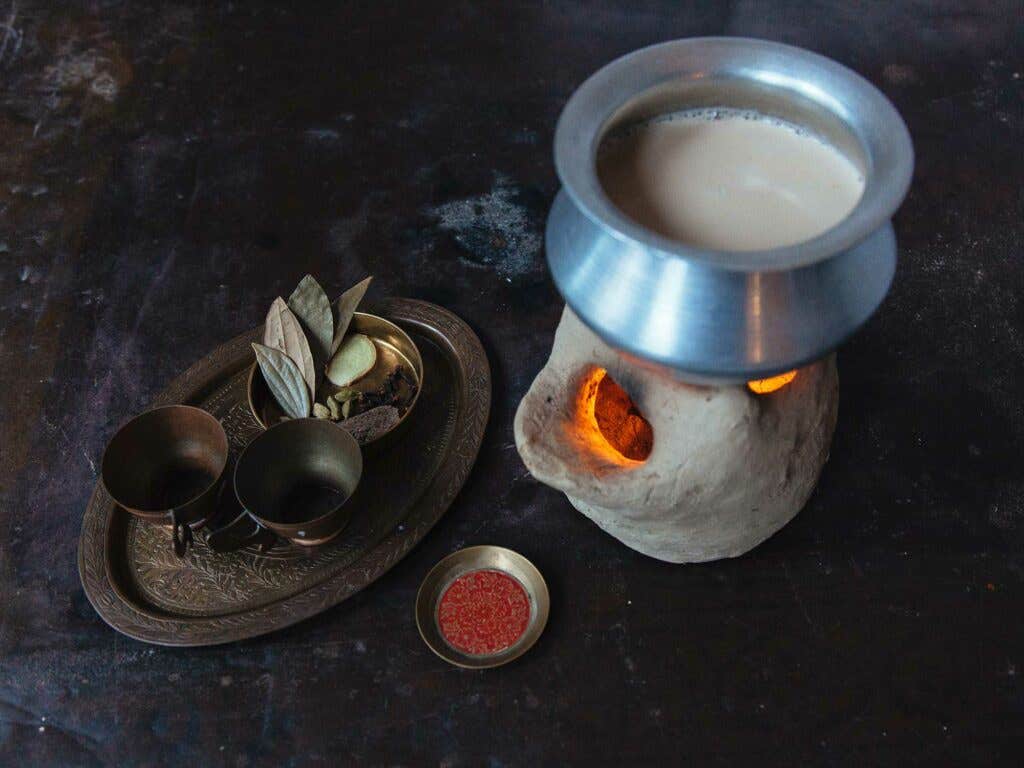
In many parts of the world including India, chai is simply the name for tea. In Bangladesh, we use the word for tea, cha (a close sound to the original Chinese cha), even when drinking spiced chai. Here in the West, we associate chai with masala chai, the spiced version of tea usually made with unpasteurized milk. So when we hear chai, we most often think of the comforting pot of spiced milk tea bubbling away.
Blame the British. After the colonials and the Tea Board introduced the concept of teatime to their plantation workers across the Indian subcontinent—part of an an effort to increase domestic sales of black tea—Indians everywhere took up the drink. The type of tea foisted on them, low-grade crush-tear-curl (CTC) tea, was fairly bitter stuff. A generous dose of milk and spices helped tea appeal to the Indian palate. Thus began a long tradition of Indian spiced tea and with it the proliferation of chai wallahs hawking the peach-colored creamy drink on every corner.
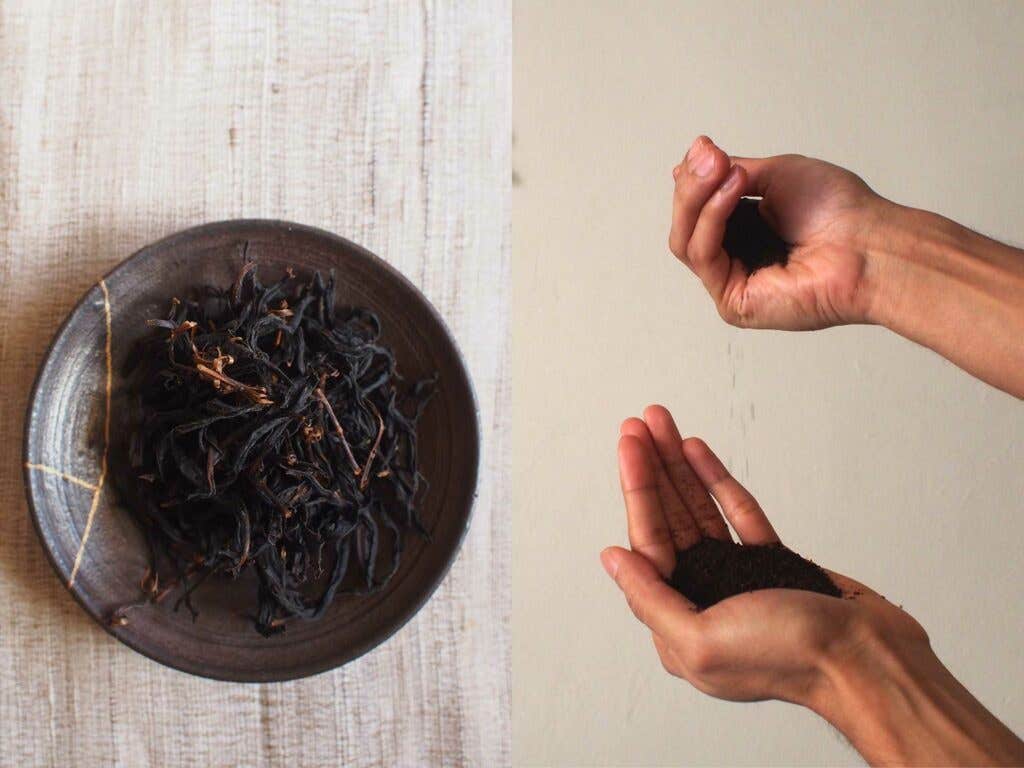
Chai on the Indian subcontinent is commonly found boiling away by hawkers called chai wallahs, and is often served in traditional clay cups called khullad. The clay is one-time-use; after finishing their chai, drinkers throw the cups on the floor by the chai wallah. Though the practice began as a class-separatist notion, a way to prevent people of different castes from drinking from the same cup, it is a natural way to drink. It emphasizes savoring the moment because, like the clay, we all return to the earth.
But Not Just Indian Chai
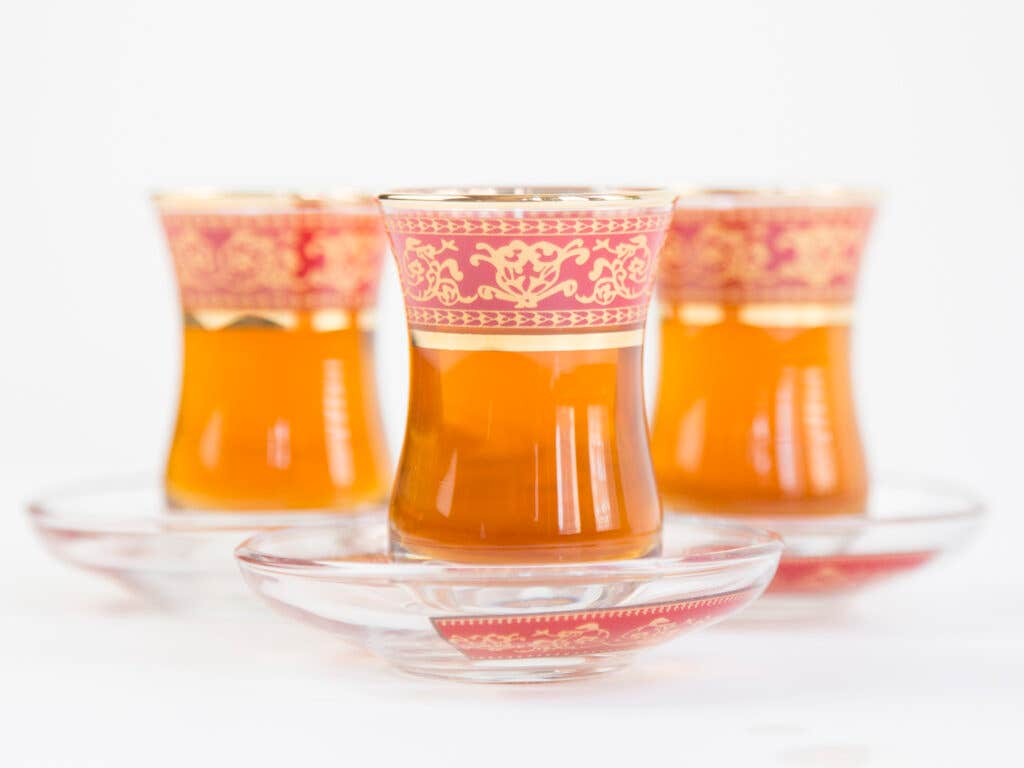
The chai those chai wallahs make is indeed often more heavy on the pepper, cardamom, and ginger than its Western parallels, but the taste of a cup of chai varies as much as a glass of wine. And beyond the subcontinent, it gets even more complicated. Seemingly everywhere you look around Asia, the Middle East, and North Africa, people are simmering tea with spices and/or milk of some kind. And some are even calling it chai.
Turkey boasts a particular infatuation with tea, or çay (pronounced chai), made in double-chambered kettles. Tea is taken strong, usually without milk, and served in a tulip-shaped glass with two hits of sugar. The country is one of the largest producers of tea in the world, most of which is reserved for domestic use.
In Morocco, Maghrebi tea drinkers boil green tea with generous mounds of sugar and fresh mint leaves. The tea is poured from a daring height into thin glasses traditionally in three cups. This tea is drunk all day and is often the setting where business is discussed. You find a similar situation in Senegal, where sweetened mint tea is meticulously prepared in a ceremony that can last up to three hours.
Up in the mountains of Tibet, po cha, or Yak butter tea, is so vital to the Himalayan people that, for many, it serves as their main source of vegetables. The drink is also suspiciously similar to chai. Boiled black or fermented tea is blended with yak butter, milk, and salt to make a drink that has an oily, salty and sometimes strongly gamey flavor that to some is an acquired taste. But its richness and dairy sweetness are unmistakeable.
The Trouble With Recipes
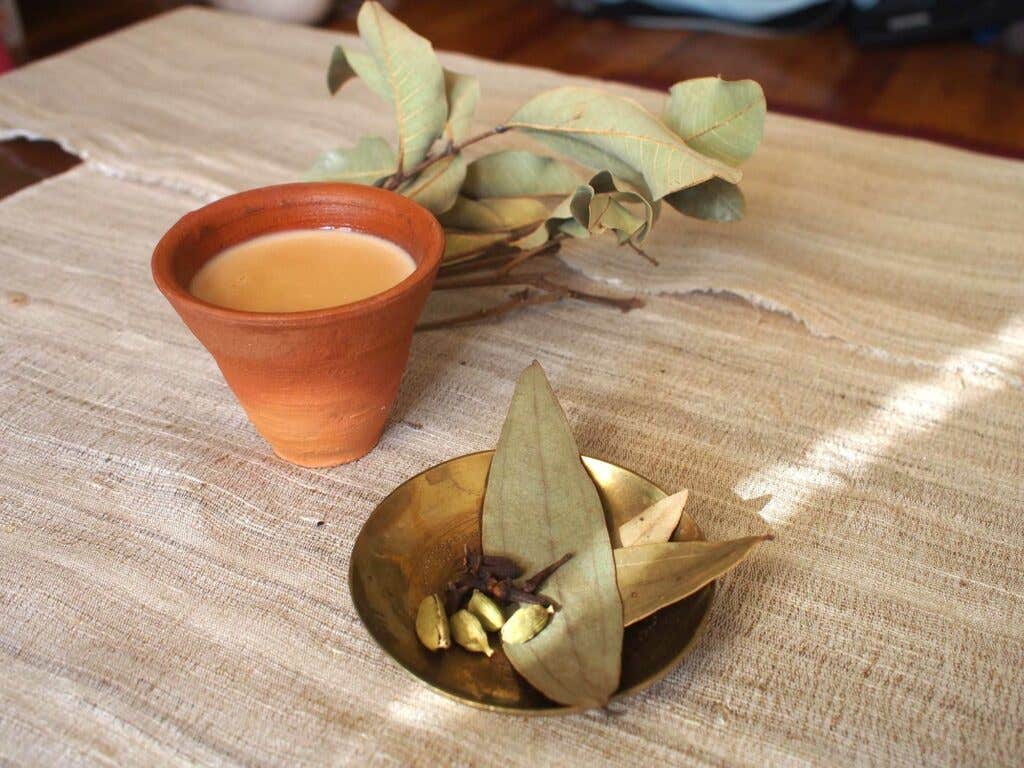
My relatives can’t agree on how to make chai. My aunt, whose chai I grew up with, keeps hers fairly simple. She refrains from adding too many spices and gently simmers her milk to concentrate its natural sweetness rather than adding additional sugar. My mother prefers a heady addition of ginger (for the slimming qualities, of course!). And my grandmother will boil lemon peel in hers for a deep citrus aftertaste.
I have no recipe to share for chai, but I do have some recommended practices. Whole milk (and if you can muster it, unpasteurized) is always better to give weight and depth. Fresh spices toasted before simmering are always more fragrant. And the quality of your tea leaves matter. But part of the comfort of chai is tinkering with the variables. Tailor-made chai—just like tailor-made clothes—fits better for you.
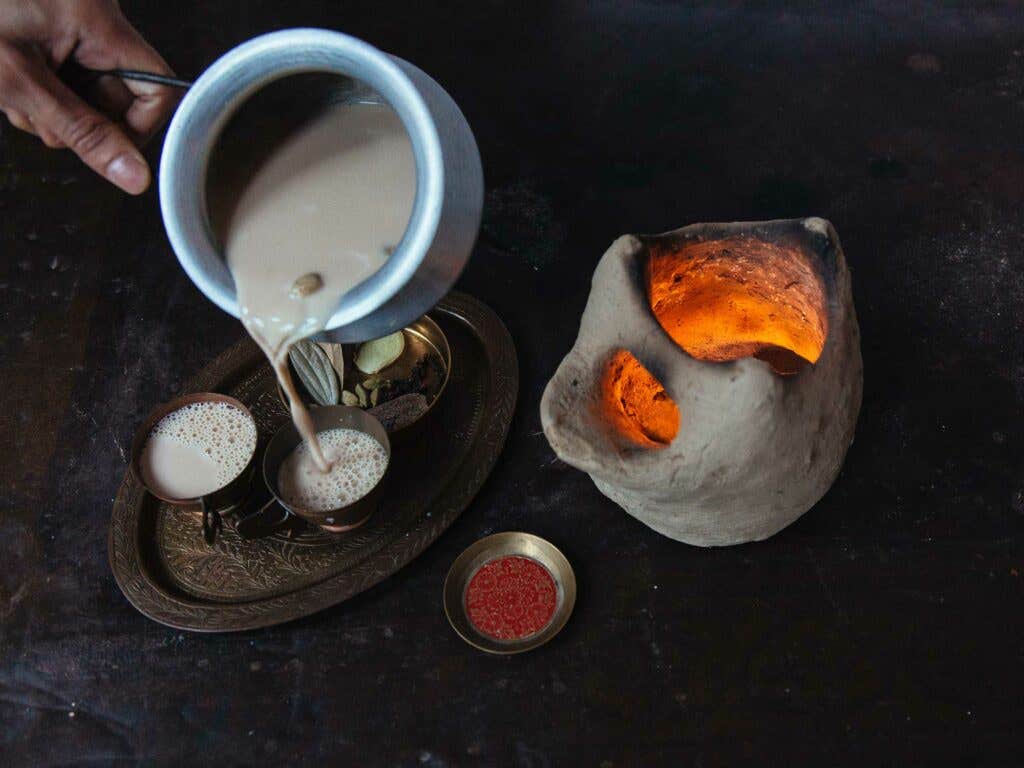
The one constant when I make chai isn't an ingredient at all. It's the chullah, the clay stove traditionally dug right into the ground away from the house. The fuel for the stove varies region to region, but when simmering chai on top, that smoke invariably works its way into the drink, much like the kiss of charcoal on a steak. My ancestors near the westernmost river overlooking India fueled their chullahs with dried reeds to fuel the flames. So when I left Bangladesh, I made a small chullah from the same earth in front of my grandmother's house so I could carry the tradition with me. To this day, it's still the only stove I use for chai. The smoke lingers.
Not that you need to make your own earthen stove to make great chai. You don’t even need to use a specific type of tea or a particular blend of spices. You just need time—to slowly simmer your milk, to toast your spices, to feel the warmth of the tea in your hand through the clay.
Keep Reading
Continue to Next Story










